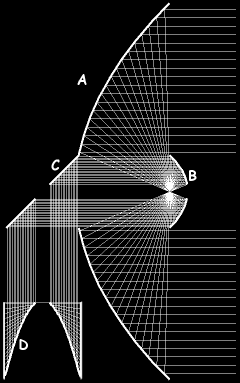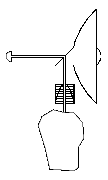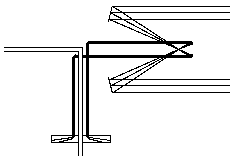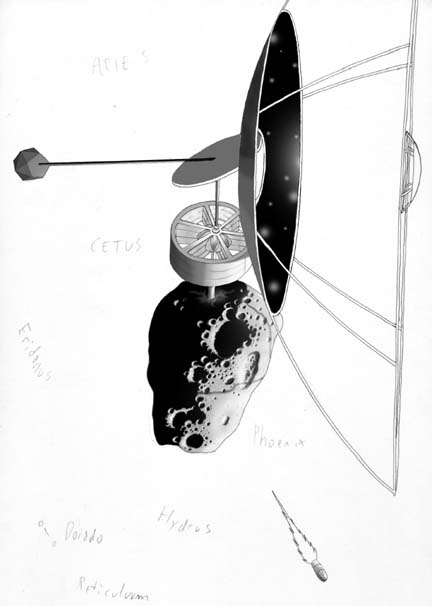| One
features I dislike about O’Neill style cylindrical habitats is the outside
windows. Most transparent materials are brittle or fragile in other ways.
The outer surface of the cylinder will need to withstand the stress of psuedo
gravity as well as endure micrometeor impacts. Much better if the outer hull
is opaque steel or other strong material. To the left is a scheme for illuminating the habitat with a series of mirrors. Large parabolic mirror A concentrates the suns rays. Small parabolic mirror B shares A’s focus and redirects the concentrated light back into parrallel rays. These parrallel rays are sent to a flat mirror C which sends them to axial mirror D. D illuminates the walls of the cylindrical habitat from within. I’ve placed the Cheng Ho on the Near Earth Asteroid Saunders 7336. Saunders has a 3.5 year period and comes close the Earth every 7 years in September. The habitat shares an axis with Saunders. It sits atop Saunders’ North pole. |

|


